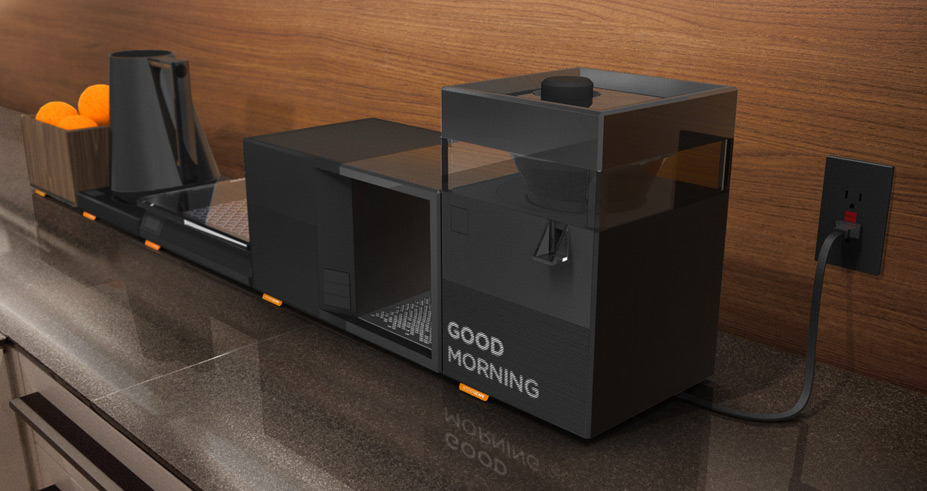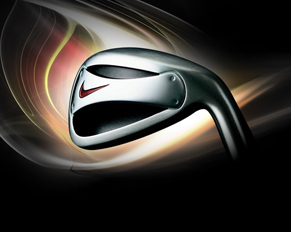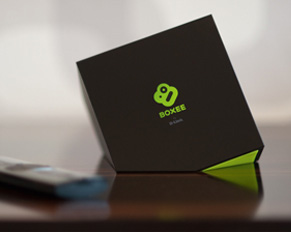Filter Foundry caught up with Silicon Valley veteran Brett Lovelady, Founder/CEO of Astro Studios in San Francisco, and picked the juicy parts of his brain. Pull up a chair and lets start with his title: “Chief Instigator.”
Brett: I’ve been a classic fire starter, someone who gets big ideas quickly, rallies a lot of people, gets them all talking, cross connecting, gets all the big ideas out, formulates it, and gets out of the way. I’m not really into tending fires, I’m better at starting them …just sort of felt like the right title compared to CEO or President or something else.
FF: Astro has a very "cool" image, both with Studios and with Gaming, how would you describe the work of both businesses?
Brett: I started Astro Studios in 1994 so it’s 17 years old, going on 18. We’re hitting adulthood, coming out of our adolescence. Astro Studios is a design firm at heart. We're basically a design service business, [we] work with many different clients from around the world. Astro Studios is really the hub of everything, all things Astro, design driven and [it] works with a mix of lifestyle, technology, design, people, projects, and programs.

Astro Gaming started 6 years ago producing [the] commercialization, if you will, of the Astro brand into premium products in the video gaming space. It’s really based on gaming experiences and gaming culture. I would say it's a mix of game play, technology, experimentation and invention to improve video gaming, really creating a lifestyle and a brand around that.
FF: How do you guys find fresh creative talent?
Brett: We look for talent via our network with other creatives, we’re also at schools. We’re online tapping into central media, sites like Filter Foundry, the Coroflots and the other folks out there. There’s a lot of cross drops. Sometimes you drop a note on LinkedIn or Facebook. You’d be surprised where it comes from sometimes. We’ve been around long enough that we get hit by the best of the best wanting to showcase their talent. So fortunate in that regard, that talented people [just] show up at the door.

FF: Do you ever find resumes tucked into your classic mustang’s windshield wiper?
Brett: You know, it’s been a few years. Mustang’s in the garage, a little too far away. We’ve had people standing out front with a portfolio in-hand waiting to come in. We get a lot of those “hey I’m visiting for the day. I’m from France, so let me show you my work.” Those things happen a lot still. FF: Asking who is your favorite client is probably like asking a parent to pick a favorite child, but...what are some of the fun projects your team has worked on?
FF: Asking who is your favorite client is probably like asking a parent to pick a favorite child, but...what are some of the fun projects your team has worked on?
Brett: I think one of our favorites, has been (for the last 15 years) Nike. Phenomenal company quite honestly. Our first program with them was all of their digital watches: [their] first electronic products. Since then we’ve been sort of a scout team, if you will, doing advanced concepts and helping them break into new categories year in and year out. They’ve been a pretty amazing client. We [did] their first golf clubs, some of their first soft goods, their first hockey helmet and a lot of things that people don’t see because they’re in the advanced concept. We love a lot of our other clients, but Nike has a special place for us because they do a lot of things really right, they go pretty deep, they try to sell real performance products. It’s a good source of work inspiration for our crew.
FF: Since not every project goes by the numbers, how you handle a problem is important. Can you share any hair-raising experiences that my readers might find inspirational?
Brett: Since we start every project with a problem statement, I think [it’s] sort of inherent in the business. I think, in "specific projects" there’s a few things that have happened more than once: changes have been made in a program last minute. A big part of our job is to hold onto the original design intent and to solve our problems.
[For example,] we’ve thought we were done, in the can, going into production and we find out, oh wait, there’s a new battery, there’s a new display or there’s a new material we want you to use. “We need you guys to scramble, dive in, fill a team of people… and come up with a new solution overnight.” Meanwhile, our engineers will be on a plane and by the time they land we want the solution in their hands so that they can go to the manufacturer and change the tools so they don’t miss the marketing window.
 You have to be really reliable and flexible and hopefully you have enough tricks up our sleeve and a “little magic sauce” to sprinkle on things to figure out how to get to the other side of this problem. A lot of it has to do with the fact that you bring teams of people together with different experiences and disciplines as well.
You have to be really reliable and flexible and hopefully you have enough tricks up our sleeve and a “little magic sauce” to sprinkle on things to figure out how to get to the other side of this problem. A lot of it has to do with the fact that you bring teams of people together with different experiences and disciplines as well.
I like to think of us as the “Red” Adair of design sometimes. “Red” Adair puts out oil fires that no one else can, and we do that quite often where clients will come in and tell us “this is good but not great. What can you guys do to make this great?” Or “We’ve got a limited amount of time with a limited budget but can you guys pull rabbits out of hats, help us find something.” We look at that as a challenge, our job. It’s what we do as designers for hire.
FF: Does a particular software program or suite help in the creative/production process? What are some of the Astro team's hardware and software "can't-live-with-outs"?
Brett: A lot of the stuff is classic software. You got Alias, SolidWorks, Rhino, 3D packages [for] modeling and development, layered in Photoshop, Illustrator with classic illustration tools. There are some interesting rendering packages like KeyShot and another one I can’t remember off the top of my head. We experiment with them all the time. After Effects for motion graphics [and] some of the guys know Flash. It depends on what story you’re trying to tell.
Most of our guys are very fluid with both mac and pc and kind of go back and forth between them. [We use] multiple big displays, tablets for drawing and sketching, [and] lots of hi-res mice. Whatever tool will help them free their creativity. The guys still rely on hand sketching, white boards and scanning all those in (whether it’s photos or papers in their notebook.) A lot of the good old pen and paper… It’s crazy… We’re trying to keep it alive.
FF: We have many gamers walking our virtual halls, what new products can we look to seeing on the shelves soon?
Brett: The “hover chair” for gaming is something we’ve been working on for a long time but not sure if that’s going to hit marketing anytime soon. We’re working on really great wireless solutions for gaming, an amazing wireless gaming headset that will be coming out in the coming months. We don’t talk about it a whole lot because we don’t want to overpromise too early.
Gaming audio, in other words the audio that’s embedded in the games, is pretty amazing. It’s really movie quality. Most people still listen to games on crappy TV speakers or PC speakers that aren’t hearing everything so once they start [using] headsets, we’ve found most people just don’t go back. So we’re going to continue with the audio side of the business.
FF: Brett, for those who are looking to venture into I.D., can you offer some recommendations and tips?
Brett: Learn to sketch and learn the tools. That’ll be the foundation of learning your craft, and the craft of industrial design. Then take those and transform them into physical experiences. Do the modeling; make physical things to solve for physical people or tangible environments. Make sure you spend enough time in all of those areas: the sketch phase, the computer phase, and the physical modeling phase.
Understand how your products are defined and how they’re sold and the whole supply chain of how they go from your end to the retailer shelf or to the consumer’s hands. Think about designing that whole experience.
FF: And finally, can you give me 'the short list' of people or companies you think are doing innovative work in design and that inspire you?
Brett: For me, it’s that constant feeding of all [the] different forms of media. People outside of our disciplines, I probably find a little more interesting than folks inside of the same things that we’re doing day in day out. To name names might be a little difficult. I’d rather stay out of that side of it but there are all sorts of different people who produce things on a daily basis… classic architecture and fashion for example.
Seeing people take existing tools and create new experiences out of them. Like the people who created Microsoft / Xbox Kinect, as an open platform created all kinds of new experiences for people that weren’t necessarily for profit but because they wanted to experiment. I think you see a lot of open source experimentation going on. I think that’s really healthy.
For more sample from Astro Studios visit their PAD: /astrostudios/

Ricky on 02/08/2012 10:26 a.m.
I love Boxee! That was an awesome idea!
john on 02/17/2012 12:21 a.m.
Checked out the Astro PAD. ridiculous, amazing work
Andrew on 02/17/2012 2:14 a.m.
Great tips, thanks!